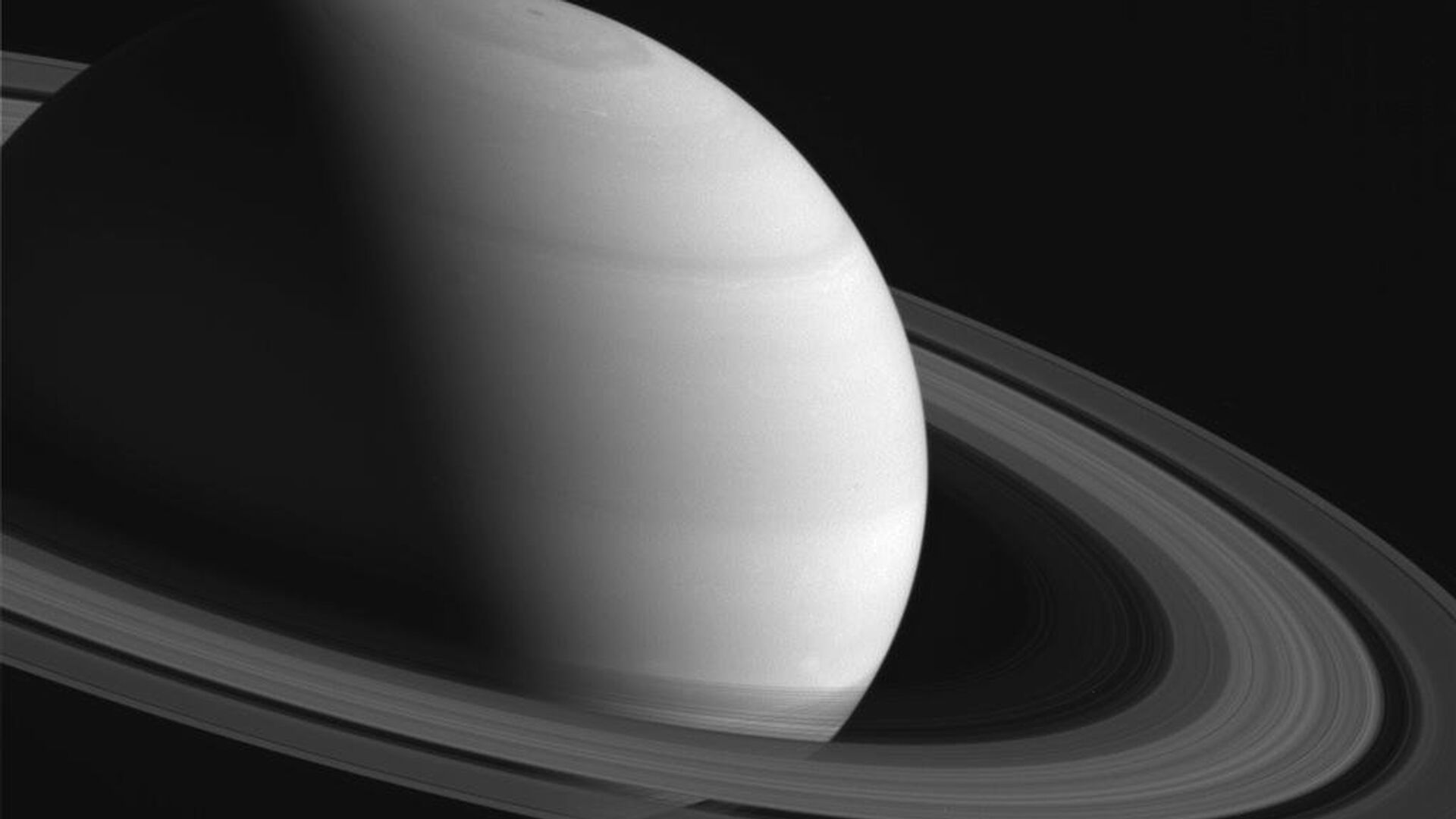Saturn's 'Death Star' Moon Mimas May Be Hiding Internal Ocean Beneath Iced Crust
03:33 GMT 21.01.2022 (Updated: 17:11 GMT 20.06.2023)

© Photo : NASA/JPL-Caltech/Space Science Institute
Subscribe
A new study published in Icarus suggests that one of Saturn’s moons, Mimas, could be harboring a liquid ocean beneath an iced crust. If further study conclusively proves the existence of a liquid ocean on Mimas it would greatly expand the scope of habitable worlds in our Solar System.
Scientists have long believed Mimas contained vast quantities of frozen water due to its eccentric orbit and heavily-cratered surface. One massive impact crater makes the moon reminiscent of the notorious fictional ‘Death Star’ from the 'Star Wars' entertainment franchise.
According to Alyssa Rhoden, one of the authors of the study, "Because the surface of Mimas is heavily cratered, we thought it was just a frozen block of ice."
The Cassini Saturn probe proved that Mimas had an orbital wobble, which proved to be a source of inspiration for Rhoden and her team. Either Mimas had a differentiated core or it contained a liquid ocean.
Before Mimas, interior water ocean worlds (IWOW) were understood through the limited study of just two moons, Enceladus and Europa.
"IWOW, such as Enceladus and Europa, tend to be fractured and show other signs of geologic activity. Turns out, Mimas' surface was tricking us, and our new understanding has greatly expanded the definition of a potentially habitable world in our Solar System and beyond," she said.
To determine if Mimas had a liquid interior, Rhoden had to observe forces that would prompt the creation of sufficient heat from inside the moon to maintain liquid water, while still retaining a thick frozen crust.
According to Rhoden, the discovery presented itself quickly. "Evidence for an internal ocean just popped out of the most realistic ice shell stability scenarios and observed librations," she said.
Their models suggest that Mimas’ ice shell is 15 to 20 miles thick, hiding a global ocean. The model also discovered that Mimas likely has a differentiated core, which should have led to a very different orbit.
"Although our results support a present-day ocean within Mimas, it is challenging to reconcile the moon's orbital and geologic characteristics with our current understanding of its thermal-orbital evolution," Rhoden said.
The discovery could change our current understanding of which celestial bodies are capable of supporting liquid oceans and, therefore, life. Rhoden believes that further study of Mimas could open up the floodgates for previously passed-over IWOWs.
"Evaluating Mimas' status as an ocean moon would benchmark models of its formation and evolution. This would help us better understand Saturn's rings and mid-sized moons as well as the prevalence of potentially habitable ocean moons, particularly at Uranus. Mimas is a compelling target for continued investigation."


